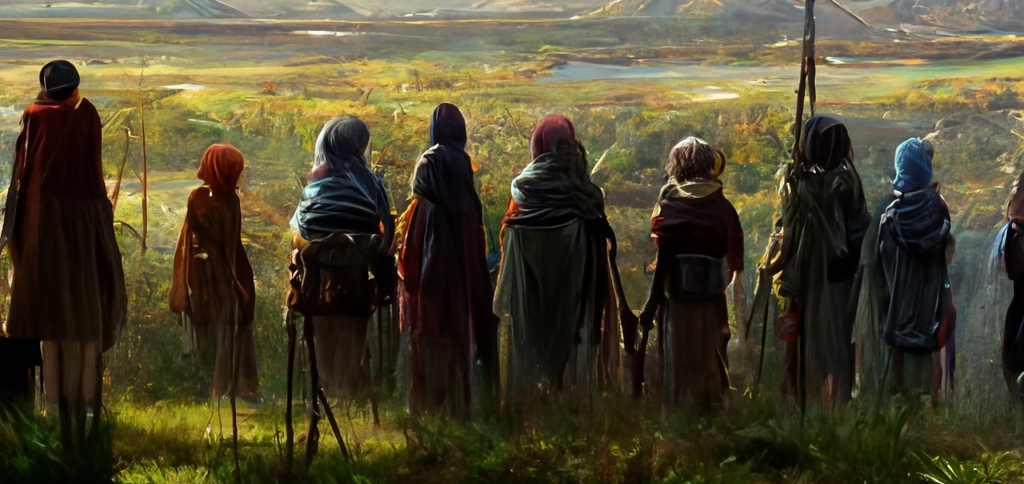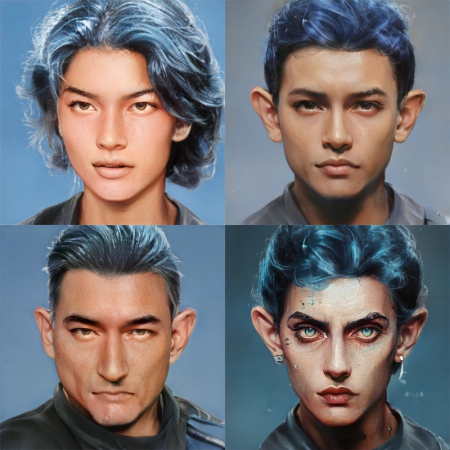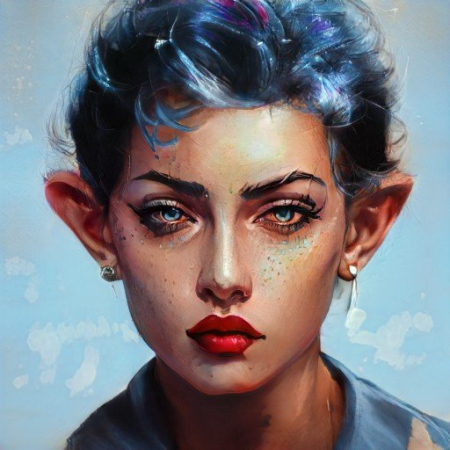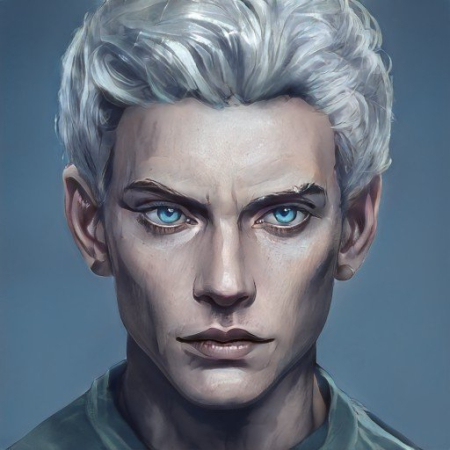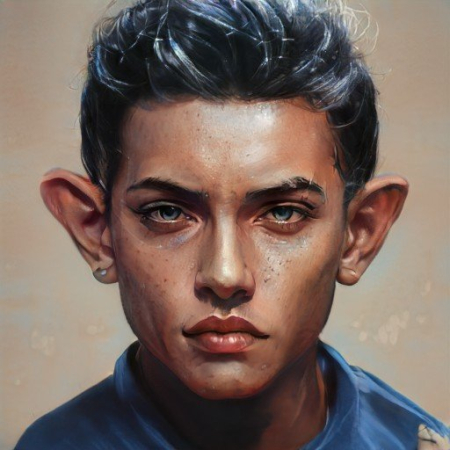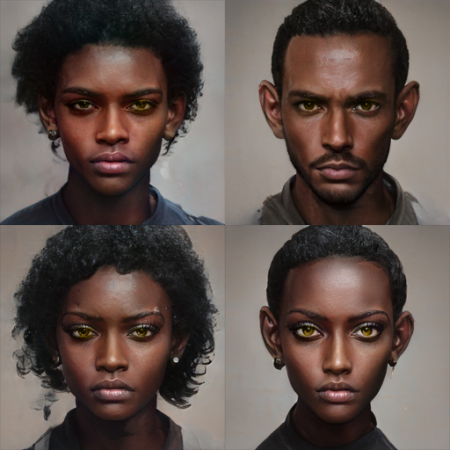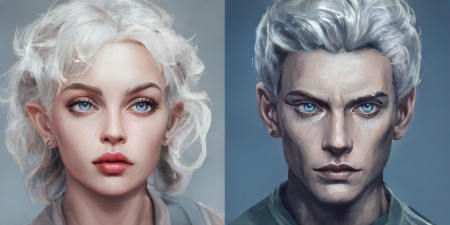Elves
With a distant but fading connection to the feywilds, Elves are a sentient species native to the continent of Felora. They are among the most widespread, particularly on the southern continent, of species of Getninia. In times gone by, the elves were the most populous of species, and still today there are millions of elves living around the world. Elves have formed a number of civilisations, all on the southern continent, including the eponymous Feloran Empire from which the continent takes its name.
Due to their long-lived nature and slow population growth, Elven societies tend to value continuity of governance and are built from tightly knit communities of several family lines. Given these circumstances, Elven societies are some of the most stable in Getninia, and collapse in similarly extreme fashions. This development dissipates in less dense elven civilisations, which are particularly vulnerable to sudden drops in population. All known societies of elves have at least adopted animal husbandry and/or agriculture, and most have basic hierarchies or social structures.
Elves can be found in all variety of social niches, from rulers to peasants, travelling merchants to cobblers, to hunters and priests. In and out of their own lands, they fulfill any number of social and economic roles. Perhaps due to some combination of their long lifespan and fey ancestry, many elves are called to more magical, technical, or academic pursuits than other races, a luxury afforded in many of the more developed elven societies. They are known, at least to the shorter lived races, as methodical and pensive, with a burning desire for exploration and discovery, which drives many to turn to a life of adventure to seek out the answers to their questions.
Basic Information
Anatomy
Like most sentient species in Getninia, elves possess an upright body with two legs and two arms, and a head. Some ethnic groups have more facial hair than others. Elves have hands with tactile fingers and opposable thumbs, traits not shared with their feet. They have two ears, a nose, and two eyes on their face. Though some elves have little body hair and no facial hair, this trait is not uniform throughout the species and many elves have hair comparable to some humans.
Biological Traits
Elves are among the longest lived mortal species in Getninia, being theoretically capable of living upwards of 700 years. As with others, high ranking members of religious, arcane, monastic, or druidic orders are capable of much longer lives, potentially seeing five millennia. Most however, live between five to six centuries, depending on social factors such as class, profession, and access to healing magic or medicine. Natural Elven lifespans are feared to be decreasing, with ancient Elves having lived past 900 years. On a generational scale, rather than adapt to their environment, Elves tend to "mirror" it due to their feywild heritage, an individual taking on certain aspects of their climate and geography over hundreds of years before passing it to their offspring.
They are more slender on average than Humans and Dwarves, ranging from 45 to 75 kilograms, but with roughly the same average height of one and a half to two meters. Conversely, they are taller than Dwarves, Halflings, and Gnomes; shorter than Orcs, Goliaths, and of course Giants. Elves are notable for their natural resistance to magical charming and for their lack of need to sleep, instead being able to trance for approximately half the time of the sleep cycles of most other races. This meditation-like state is vital for the health of an Elf, enabling them to process, analyse, and retain centuries of memories and experience.
Elves possess a wide range of colour variations, often depending on ethnicity. Their skin tones encompass those common to humans, as well as obsidian, grey, copper, bronze, and subtle purples or blues. Elven shares with humans the common tones of light blonde, red, brown, and black; with additional tones of white, blue, and magenta. No matter the hair colour, all lose their pigment as they age. They have eyes that can be brown, blue, green, lilac, gold, purple, and silver with nearly infinite combinations of those colours found in elves. Though it is rare, some exceptional Elves with particularly strong Eladrin ancestry possess exotic hair, skin, and eye colours reminiscent of their ancestors from the Dàlùnsten.
Additional Information
Social Structure
Elves have some complexities in their social structures, and most do live in some form of hierarchy, however these are generally less rigid and defined than Dwarves and Humans are on average. Autocratic elven societies are rare, however many have developed complex bureaucracies. Collective rituals are a defining feature of most Elven societies. Elven social structures are centered around caring for the young, and shepherding new generations through their first century or so. Regional variations exist, in division of collective labor, and in gender norms.
Geographic Origin and Distribution
Most elves are spread thoughout Felora, specifically Inner Felora, with secondary centers in the Southern Reaches and the Yulani Coast. Elven communities are additionally found on Leandris and Galisea, mostly in non-elf civilisations around the Tealastrian.
Average Intelligence
Elves are a sentient species, capable of forming complex social structures and drastically reshaping their physical environment. As in most known sentient species, they have their own unique sense of aesthetics, ethics, and morality. Most elves will become literate in some way at some point in their many centuries. It is indeed the natural inquisitiveness of elves that drives the wanderlust of many elven adventurers. Elves, like all sentients, are capable of great intelligence, however they are less closed about their knowledge than Giants.
Perception and Sensory Capabilities
Elves possess five basic senses sight, hearing, taste, tactile, and smell. They rely primarily on their sight to perceive the world with the other senses used noticeably less, though hearing, and smell can also be used to percieve at a distance. Elves have decent darkvision, underdark dwellers especially so, though some have trouble seeing in the light.
Civilization and Culture
Major Organizations
Elves dominate five states in Felora, four descended from the Feloran Empire in some way, with a fifth in the southern reaches. These states are in a variety of geoographies, including woodlands, highlands, mountains, and even the underdark. The Feloran Successor States are the most present in world affairs, with the shadow of the Empire cast from Soren and an expanding (and increasingly half-elf) mercantile state in the Dotharan Alliance. In the far south of the continent is the underdark Vöth Emirate, the most significant non-Feloran Elven society.
The most prominent faith among Elves is Ëlhyaea, a spiritual and mythological belief was founded by Ekorans and spread during the time of the Feloran Empire. It's an animistic and pluralistic faith, and exists primarily in Felora, however communiites practice the faith in Galisea and many of it's myths and figures have been syncretised in other faiths. Many more disorganised groups have their own faiths with varying similarities and connections to the Ëlhyaean faith. The Vöth practice a highly esoteric faith centered around a tight pantheon.
Average Technological Level
Elven societies are highly advanced on average, with a many ancient and magical technologies being invented or attributed to the eldest (and extinct) elven societies. Technological innovation has stagnated in many of the traditional societies of Elves, being outpaced by Dwarves and even some Human civilisations. As the descendants of planar travelers, who would have had the means to cross from the feywilds into the material plane, Elves had a head start compared to Dwarves, Humans, and Halflings in the fields of magic. However, since the Getninian Cataclysm the use of this magic has grown difficult, and the artifacts and technology made with and employing it is rare.
Major Language Groups and Dialects
The most widespread tongue spoken by Elves is Feloran, evolving out of Yuranan and spread across the continent for thousands of years, picking up loanwords and undergoing shifts in the process. Other elven tongues include Ekoran and Vothrak, and the common trade pidgin evolved partially out of Feloran. Elves outside of their homelands, particularly in Galisea, often learn the languages of the Tealastrian societies. Those who adopt certain professions may learn others.
Genetic Ancestor(s)
Lifespan
~500-600 years, rarely up to ~750 years
Average Height
~1.5-2 m
Average Weight
45 - 75 kg
Geographic Distribution
Related Organizations
Related Ethnicities
DnD (5e) Traits:
Link to D&D Beyond- Ability Score Increase: Your Dexterity score increases by 2.
- Medium Size
- Base walking speed is 30 feet.
- Darkvision: Accustomed to twilit forests and the night sky, you have superior vision in dark and dim conditions. You can see in dim light within 60 feet of you as if it were bright light, and in darkness as if it were dim light. You can’t discern color in darkness, only shades of gray.
- Keen Senses: Proficiency in the Perception skill.
- Fey Ancestry: You have advantage on saving throws against being charmed, and magic can’t put you to sleep.
- Trance: Elves don’t need to sleep. You can finish a long rest in 4 hours if you spend those hours in a trancelike meditation, during which you retain consciousness. After resting in this way, you gain the same benefit that a human does from 8 hours of sleep.
Pathfinder (2e) Traits:
See link to Pathfinder Nexus for full details.- Ability Score Modifiers: Elves are nimble, both in body and mind, but their form is frail. They gain +2 Dexterity, +2 Intelligence, and –2 Constitution.
- Size: Elves are Medium creatures and thus receive no bonuses or penalties due to their size.
- Type: Elves are Humanoids with the elf subtype.
- Base Speed: Elves have a base speed of 30 feet./li]
- Languages: Elves begin play speaking Common and Elven. Elves with high Intelligence scores can choose from the following: Celestial, Draconic, Gnoll, Gnome, Goblin, Orc, and Sylvan. See the Linguistics skill page for more information about these languages.

